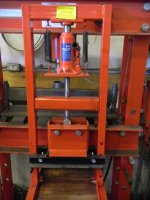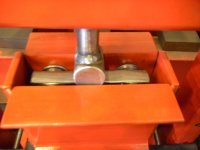What I've read about hydrogen embrittlement, is not a problem with A-36 steel, it is when you get into high strength steel where you will have problems. 7018 is required to weld some high strength steels, along with 80, 90, and even 11018. One way to look at it, how much mild steel is welded with 60xx filler everyday. 7018 is major over kill for mild steel.
I remember one time being on a job where they had a CAT 966 loader. Also had a fork attachment for this loader. The forks were made out of T-1. One day the loader operator broke one of the forks right in the heel. This fork was about 8-inches wide, and 4-inches thick in the heel. I got elected to weld it up. I double beveled the long section, preheated to 300-degrees, used 11018 right out of a new can. Never seen the inside of a rod oven! When completed I wrapped the fork in house insulation, and went home for the night. Next morning the mechanics, and loader operator installed the repaired fork. For the next 1 1/2-years I watched that same loader operator abuse that fork, it never broke!

I could be all wet about hydrogen embrittlement, there is a lot of information out there about the subject, 99% of it goes right over my head.:confused3: That is why when welding something that is critical, engineers write up a WPS, and expect the welder to follow it.
Sure I could hold onto those coupons, but who is going to remind me to bend them in 6-months?:laughing:

